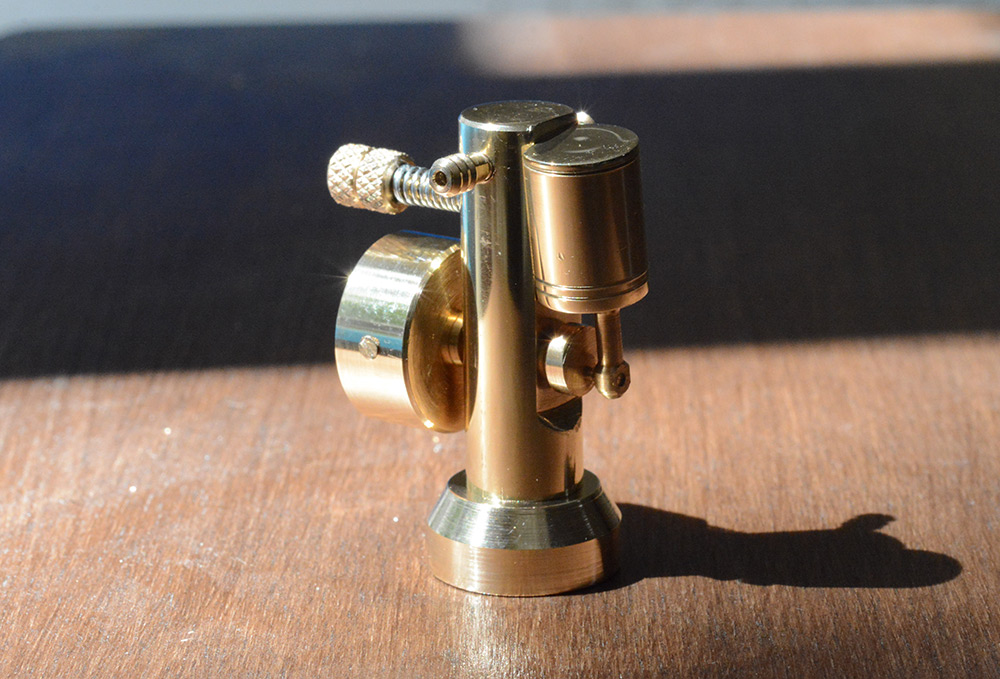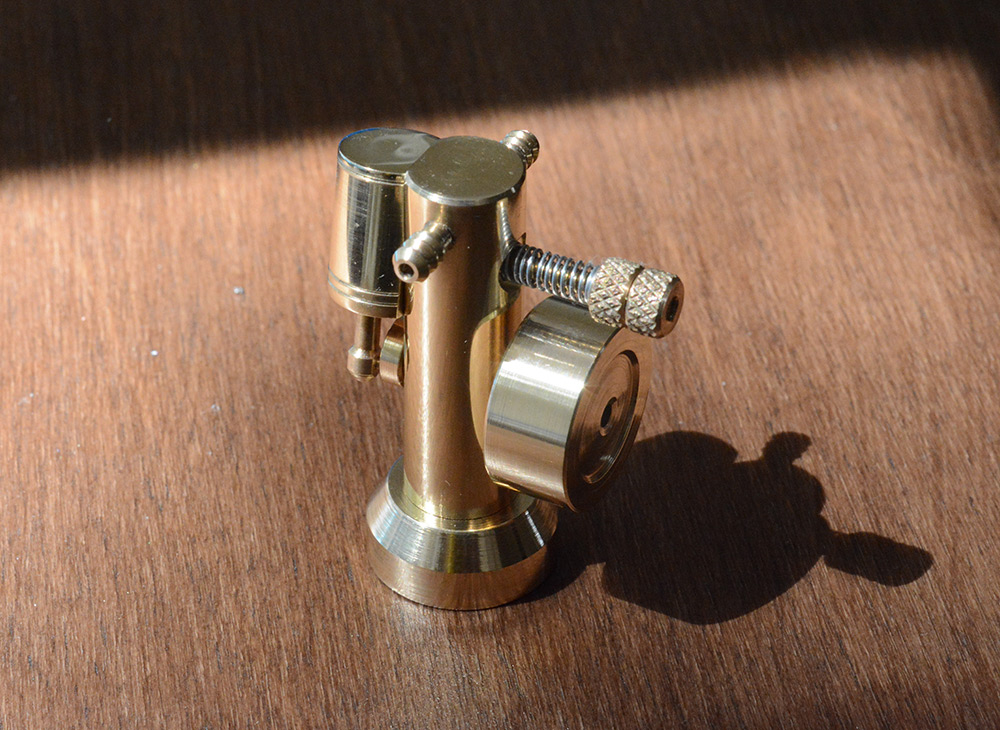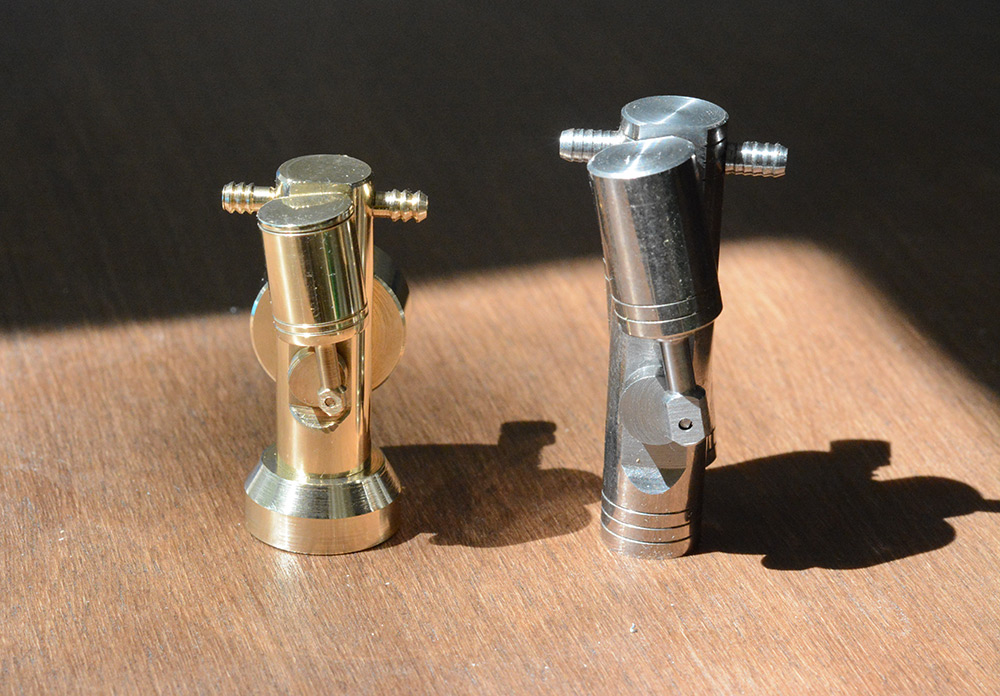
Brass Wobbler
6 Aug 2019Progress: Complete
Time for some electronics! Just kidding.
I find that when you're feeling stressed, nothing takes the edge off quite as well as machining a tiny steam engine.
This one is almost identical to my very first wobbler, except that it's made of brass and about one third smaller. Runs on compressed air in either direction.

Brass is expensive, but it is a joy to work with.
Brass tarnishes quickly. On the other hand, it's very easy to polish up. There are some toolmarks still visible on the base – clearly I needed to polish that a bit more. But they're more obvious in the pictures than in real life, the whole thing is only about 45mm tall.
The bore is 4.5mm and the stroke is 5mm. It was possibly a mistake to lap the bore, although I ended up with a perfectly airtight fit, I think some of the abrasive has embedded into the brass, so the bore may continue to widen as the engine runs. In the future, when working with brass, I will only use a tiny boring bar.
The decorative grooves in the cylinder serve no purpose other than to trap dirt.

The spring was wound around a mandrel on the lathe, starting with some spring-steel wire acquired from a different, incorrectly sized spring.
The knurled locknuts are tapped M2.5. There's also an M2.5 setscrew holding the flywheel in place.
The threaded pivot is soldered to the cylinder, which is another advantage of working with brass.
The inlet and outlet holes were drilled on the bridgeport. When building my previous engines, I just handheld a minidrill to do these, but doing it on a bridgeport is substantially easier. I used the dremel-style drillbits that have a 3mm shank, which can then be held in the ER32 collet on the mill. The runout is small enough that accurately drilling 0.5mm holes is positively easy.
Comparison shot with the original wobbler:

The size difference is less obvious because of the addition of the weighted base to the design. It does a good job at stopping the thing wobbling around as it runs. The conventional flywheel helps a lot too.

I think we've had enough practice building wobblers now. The next engine will have a valve box and be double-acting. Hold tight, dear readers, hold tight!